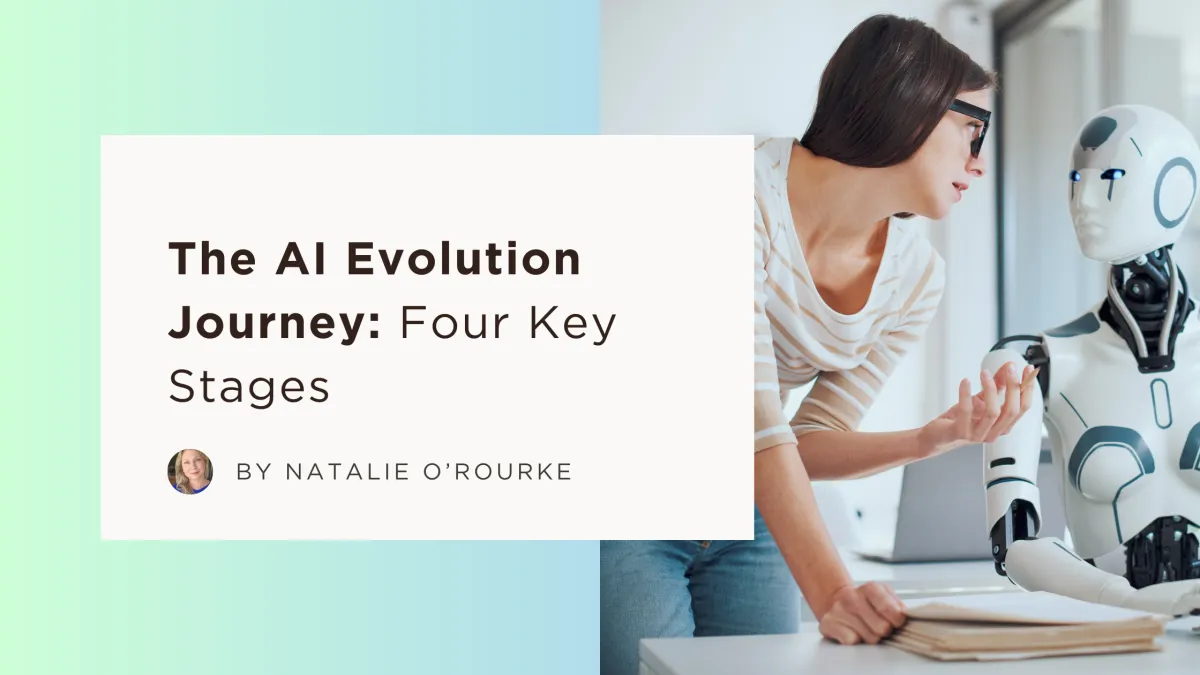UX AI Blog

The Evolution of AI: From Simple Tools to Autonomous Systems
Artificial Intelligence (AI) has become a buzzword that appears in headlines everywhere, but what exactly is it, and how is it evolving? This post breaks down AI's journey from simple programs to the intelligent systems of tomorrow, using everyday examples that everyone can understand.
The AI Evolution Journey: Four Key Stages
Stage 1: AI Models - The Smart Tools We Use Today
Think of today's AI models as specialized kitchen appliances. Each is designed for a specific task and works only when you activate it.
How they work: When you ask a question on Google, the search AI responds with relevant results. When you upload a photo to a filter app, the AI applies the effect you chose. These systems wait for your command, perform one task, and then wait for the next instruction.
Real-world example: When shopping online, you might see "Customers who bought this also bought..." recommendations. This simple AI analyzes purchase patterns without understanding what the products are—it just recognizes that these items often appear together in shopping carts.
Key limitation: These AIs have no memory between interactions and no concept of what they're doing—like a calculator that can perform complex math but doesn't understand what numbers actually represent.
Stage 2: AI Agents - The Smart Assistants Emerging Now
AI agents are like personal assistants who remember your preferences and can take initiative to solve problems.
How they work: Unlike simple models, agents can maintain information across multiple interactions, use different tools to accomplish tasks, and learn from mistakes.
Real-world example: When you tell Siri, "Remind me to call Mom when I get home," it needs to remember your request, track your location, know who "Mom" is in your contacts, and trigger the reminder at the right time. This requires maintaining context and coordinating multiple functions.
What makes them different: If you ask an AI agent to book you a restaurant for dinner, it might check your calendar for conflicts, look at your previous dining preferences, find restaurants with availability, and even suggest a reservation time—all without you specifying each step.
Stage 3: Agent Networks - The Collaborative Teams of Tomorrow
Imagine a team of specialists working together, each handling different aspects of a complex project.
How they work: Different AI agents with specialized capabilities coordinate with each other to tackle problems too complex for any single agent.
Hypothetical example: When planning a vacation, one agent might search for flights based on your budget and preferences, another might find accommodations, while a third creates an itinerary based on your interests and past travel patterns. A "manager" agent would coordinate all these efforts and present you with a complete travel plan.
Why this matters: Just as human specialists can achieve more by working together, networks of AI agents can solve problems that would be impossible for individual systems.
Stage 4: Autonomous Systems - The Self-Directing Organizations of the Future
These future systems will operate like self-managing organizations that can set their own goals and improve themselves over time.
How they would work: Autonomous systems could monitor their environment, adapt to changing conditions, make independent decisions, and even redesign their own processes to become more effective.
Hypothetical example: A future agricultural system might independently monitor soil conditions, weather forecasts, and crop health across thousands of acres. It could adjust irrigation, deploy drones for targeted pest management, schedule harvests at optimal times, and continuously improve its methods based on results—all while keeping human operators informed but not requiring constant direction.
The human role: Rather than controlling these systems directly, humans would establish boundaries, set high-level objectives, and provide oversight—similar to how a board of directors governs a company.
Why This Evolution Matters
Changing Human Roles
As AI evolves through these stages, our relationship with technology changes:
Stage 1: We directly control each action (like using a tool)
Stage 2: We supervise and guide (like managing an assistant)
Stage 3: We coordinate and direct (like leading a team)
Stage 4: We govern and oversee (like setting policy)
Growing Capabilities
Each evolutionary stage brings new possibilities:
Simple AI models can handle routine tasks like sorting emails or recommending products
AI agents can manage complex personal tasks like scheduling or research
Agent networks could revolutionize healthcare by coordinating diagnosis, treatment planning, and patient monitoring
Autonomous systems might address global-scale challenges like climate modeling or supply chain optimization
What This Means For You
Even if you're not a tech expert, understanding this evolution helps you prepare for the changing technological landscape:
The tools you use today will become increasingly proactive and personalized
New skills will become valuable, especially those focused on directing and collaborating with intelligent systems
Ethical questions about autonomy, transparency, and control will become increasingly important
Conclusion
The evolution of AI isn't just about more powerful technology—it's about a fundamental shift in how we interact with computers, from tools we control to partners we collaborate with. By understanding this progression, we can all participate in shaping how these technologies develop and integrate into our lives.


